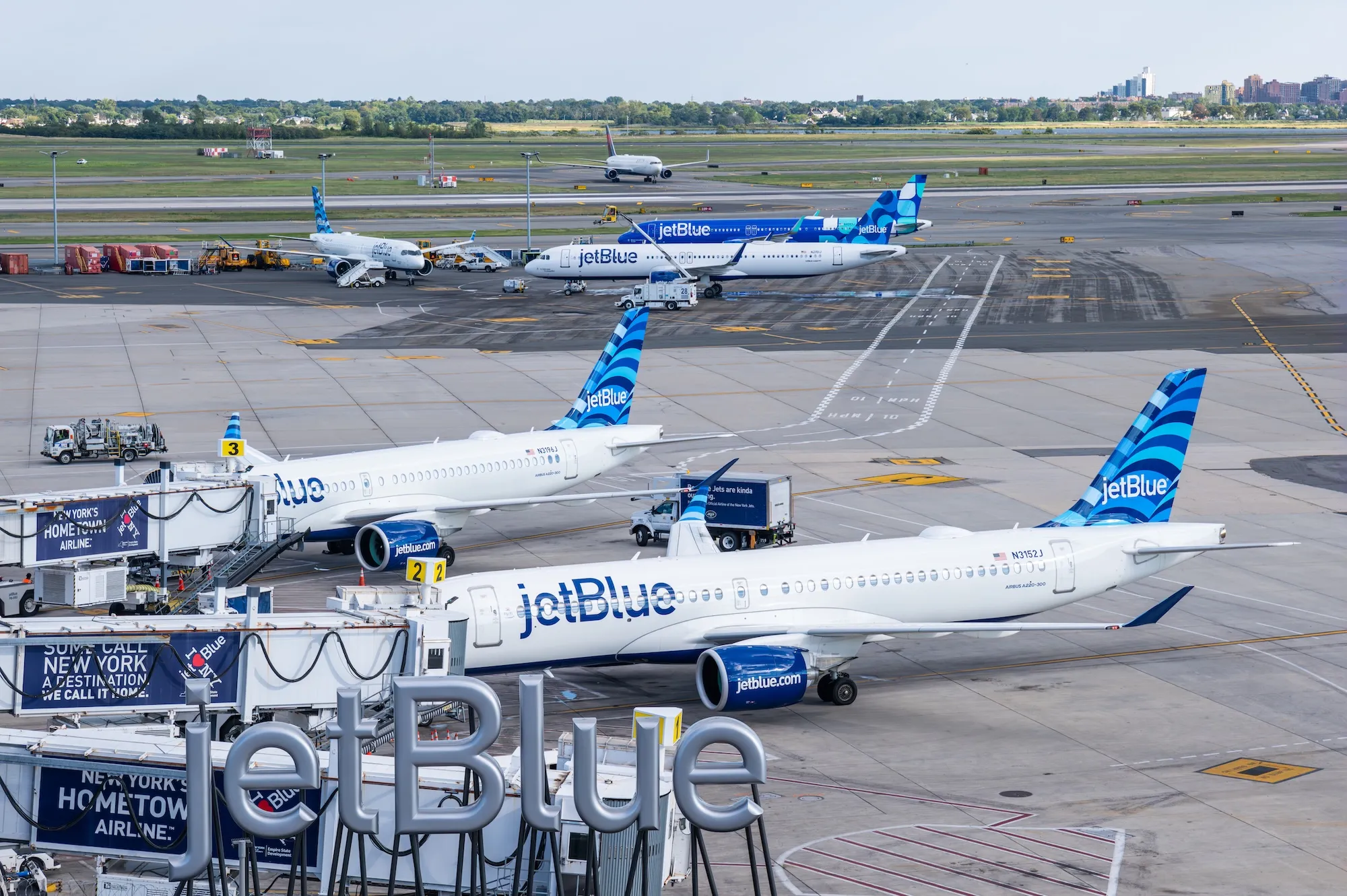NEW YORK — JetBlue Airways (B6) delivered its second-quarter results for 2025, reporting a net loss under U.S. Generally Accepted Accounting Principles (GAAP) alongside a modest operating profit, thanks to improved demand, stronger operations, and continued progress on its JetForward strategy.
Financial Highlights
- GAAP Net Loss: US$74 million (−US$0.21 per share), notably better than analysts expected (around −US$0.33)
- Adjusted Net Loss: US$58 million (−US$0.16 per share), JetBlue narrowly avoided a profit by its non‑GAAP measures
- Operating Revenue: US$2.36 billion, down 3.0% year-over-year
- Operating Margin: Positive 0.3%; Adjusted margin reached 1.3%
JetForward Strategy: Progress and Financial Impact
JetBlue’s multi-year JetForward transformation plan continues to bear fruit. The airline generated US$90 million in incremental EBIT during the first half of 2025, bringing total cumulative gains to US$180 million since program launch.
A new Blue Sky partnership with United Airlines (UA) is expected to add US$50 million in incremental EBIT, prompting JetBlue to raise its JetForward profitability target to US$850–950 million by 2027, up from the previous US$800–900 million range.
Operational & Demand Trends
Performance metrics improved in Q2: on-time arrivals rose by approximately three percentage points, Net Promoter Score climbed by double digits, and bookings strengthened, especially for trips within 14 days and during peak travel periods into July.
Capacity was trimmed by 1.5%, matching the decline in unit revenue (RASM), which fell by around 1.5%, exceeding earlier company guidance. Costs per available seat mile excluding fuel (CASM ex‑Fuel) rose 6.0%; however, they are still outperforming prior cost forecasts.
AOG Outlook & Fleet Management
JetBlue provided a more optimistic forecast for its aircraft-on-ground (AOG) situation related to Pratt & Whitney engine issues, projecting fewer than 10 grounded aircraft on average for 2025, well below previous estimates in the mid-to-high teens. The company expects this to improve further into 2027.
JetBlue is also streamlining its fleet: divesting its Embraer E190s and scaling down some Airbus A321neo XLR orders, helping to cap capital expenditures at under US$1 billion annually from 2026 onward.
Guidance & Forward Outlook
For Q3, available seat miles (ASMs) are projected to fluctuate between 1.0% and +2.0% year-over-year. Meanwhile, RASM (Revenue per ASM) is forecast to decline by 2% to 6%, and CASM (Cost per ASM) ex‑Fuel is expected to rise by 5% to 7% in 2025.
JetBlue anticipates restoring revenue growth in 2026 as engine disruptions ease and demand continues to recover.
Bottom Line
JetBlue closed Q2 with a sharper-than-expected loss by GAAP metrics, but delivered a small internal profit thanks to disciplined cost management and stronger travel demand later in the quarter. The JetForward transformation and new Blue Sky alliance are shifting the airline’s financial trajectory, headlining operational stability with a plan to reach nearly US$1 billion in EBIT by 2027.
As headwinds ease, specifically with fewer grounded aircraft and improving unit metrics, the company expects 2026 to be a return-to-growth year. For now, JetBlue is navigating toward better performance, keeping a close eye on costs and demand trends in a still unpredictable industry.
Stay tuned to Airways Magazine for ongoing coverage of JetBlue’s transformation journey. Follow us on LinkedIn and Instagram for the latest updates as well!



.webp)
